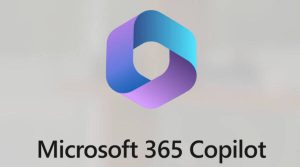The impacts of Microsoft Copilot, Loop, and other AI advances
With the major announcements this week, there is palpable energy across the collaboration community. The introduction of Microsoft Copilot, the preview of the Microsoft Loop app, and availability of other AI-focused features and tools marks an exciting shift in the landscape of team collaboration and personal productivity. As AI technology continues to advance, several trends are beginning to shape the future of collaboration and productivity, from enhanced real-time collaboration, intelligent assistance, and adaptive learning to more personalized experiences and automation around decision-making and problem-solving.
What is Microsoft Copilot?
 Microsoft Copilot, which is based on OpenAI’s Codex technology, is an AI-powered coding assistant that helps developers write code, find relevant examples, and understand new APIs more easily.
Microsoft Copilot, which is based on OpenAI’s Codex technology, is an AI-powered coding assistant that helps developers write code, find relevant examples, and understand new APIs more easily.
“Today marks the next major step in the evolution of how we interact with computing, which will fundamentally change the way we work and unlock a new wave of productivity growth,” said Satya Nadella, Chairman and CEO, Microsoft. “With our new copilot for work, we’re giving people more agency and making technology more accessible through the most universal interface — natural language.”
GitHub Copilot is an AI-powered code completion tool developed by GitHub in collaboration with OpenAI. It uses OpenAI’s Codex technology, which is a large-scale language model trained on a vast amount of code from various programming languages. GitHub Copilot is designed to help developers write code more efficiently by providing context-aware code suggestions, autocompleting code snippets, and offering examples of implementation for a given problem.
Microsoft, on the other hand, has been integrating AI-assisted features in several of its products, like Microsoft 365, Visual Studio, and Power Platform. These AI-driven capabilities aim to enhance productivity, collaboration, and user experiences by offering intelligent suggestions, automating tasks, and providing valuable insights.
Copilot is incorporated into Microsoft 365 through two methods: First, it functions alongside you, integrated within the Microsoft 365 applications you frequently use, such as Word, Excel, PowerPoint, Outlook, Teams, and more. This integration helps unleash creativity, boost productivity, and elevate skills.
Second, Microsoft is introducing a brand-new experience called Business Chat. This feature operates across large language models (LLM), Microsoft 365 applications, and your data, including your calendar, emails, chats, documents, meetings, and contacts. It enables capabilities that were previously unattainable. By providing natural language prompts such as “Inform my team about the updates in our product strategy,” Business Chat can generate a status update based on the day’s meetings, emails, and chat conversations.
We are one huge step closer to the computer experiences in Star Trek, allowing us to have conversations with our computers and receive back personalized, contextual, and specific results.
What is Microsoft Loop?
 Microsoft Loop is an app that was introduced to enhance collaboration, productivity, and content creation within the Microsoft 365 ecosystem. It is designed to bring together various elements of Microsoft’s suite of tools and enable real-time, seamless collaboration among team members.
Microsoft Loop is an app that was introduced to enhance collaboration, productivity, and content creation within the Microsoft 365 ecosystem. It is designed to bring together various elements of Microsoft’s suite of tools and enable real-time, seamless collaboration among team members.
Loop is built around three key components: Loop Components, Loop Workspaces, and Loop Pages. Here’s how they work together to impact content creation and collaboration within Microsoft 365:
- Loop Components: These are modular, live units of content that can be embedded in different apps like Outlook, Teams, and OneNote. They can include anything from text snippets, tables, and lists to more complex elements like task boards and timelines. These components can be edited in real-time by multiple users simultaneously, ensuring everyone is working with the most up-to-date information.
- Loop Workspaces: These are shared spaces where team members can collaborate on content, organize components, and track progress. Workspaces are designed to adapt to different workflows and can be accessed from within various Microsoft 365 apps, providing a central hub for collaboration.
- Loop Pages: These are flexible, adaptive documents that can hold Loop Components and other content. They provide a canvas for team members to work together, co-author, and share information, making it easy to create and organize content.
As modern work shifts toward hybrid, I am excited about the impact of Microsoft Loop on content creation and collaboration. Loop aims to enhance content creation and collaboration within Microsoft 365 by providing an interconnected system of components, workspaces, and pages that streamline workflows, promote real-time collaboration, and offer greater flexibility and organization.
- Enhanced real-time collaboration: Loop facilitates real-time, multi-user editing of components across different apps, ensuring everyone is working with the latest information and reducing redundancy.
- Improved productivity: Loop streamlines workflows by allowing users to access and edit content within their preferred apps, without needing to switch between different tools.
- Greater flexibility: Loop Components and Pages are adaptive, making it easy for teams to customize and reorganize content as needed. This flexibility supports evolving project requirements and ensures teams can work together efficiently.
- Better organization and tracking: Loop Workspaces provide a central hub for organizing content, tracking progress, and managing tasks. This helps keep teams aligned and focused on their goals.
- Easier sharing and communication: Loop’s integration with various Microsoft 365 apps simplifies content sharing and communication, making it easy for teams to collaborate and stay informed.
The Future of Collaboration and Productivity
The future holds immense potential for teams to work more efficiently, adapt to changing work environments, and drive innovation. However, it’s crucial to consider potential challenges such as data privacy, security, and ethical considerations while harnessing the power of AI to ensure responsible and sustainable development.
For those who are interested in these tools and would like to participate in a community discussion about their impact and the future of collaboration, this will be the topic of the April 2023 #CollabTalk TweetJam, which will be held on April 26th at 9am Pacific via Twitter and the #CollabTalk hashtag. I’ll share more details as we get closer to the date, but be sure to block out the date and time on your calendar!
Until then, I highly recommend that you read the Worklab Forecast on these releases to better understand the data and reasoning behind these new tools and features. Fascinating read.





1 Response
[…] The impacts of Microsoft Copilot, Loop, and other AI advances [blog] […]